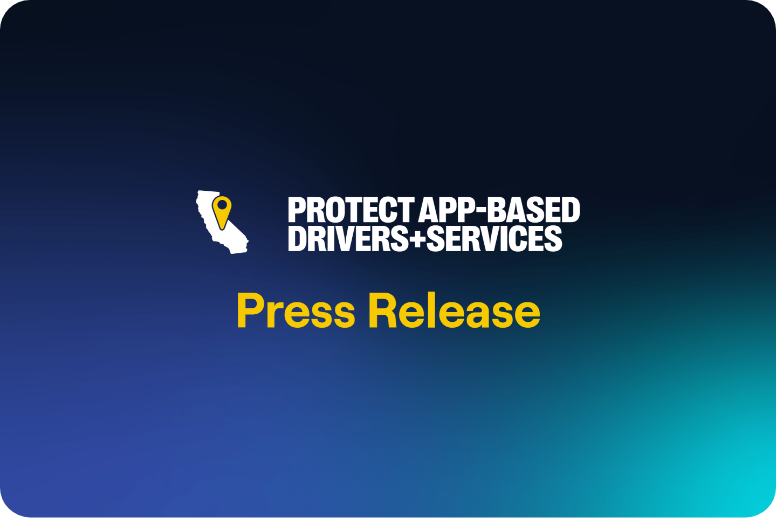By Louis Hyman – Contributor, CNN Business
On January 1, a law went into effect in California known as AB5 that is intended to reclassify many of the state’s independent contractors as regular employees and give them the workplace benefits they deserve, such as unemployment and disability insurance. Perhaps even more importantly, as employees, these gig workers will have access to the full body of rights under labor and employment law. Without those rights, contractors — Uber and Lyft drivers, freelancers and other gig workers — are being exploited. As employees under the new law, it is hoped, they will enjoy job stability and decent wages. The unstated assumption of lawmakers here is that companies will simply comply with the law and convert those gig jobs into full-time positions.
The reality is less promising.
For decades, as I showed in my recent book, Temp, California has relied on independent contractors across its economy, especially as it became the hotbed first of electronics and then of tech. Many firms operating in California will not be able to reinvent their workforces overnight, especially large digital logistics firms like Uber, Lyft, Instacart and Grubhub. Uber and Postmates continue to pursue legal remedies, seeking an injunction on the law. Lyft and other companies want to go to voters with a ballot initiative. It would be difficult for these companies to employ a traditional workforce and offer the level of service at the prices consumers have come to expect.
While the law was aimed at digital logistics firms, it still applies to other sectors which also use freelancers. Earlier in December, Vox Media, citing AB5, announced it was parting ways with about 200 independent contractors who contributed to its sports news site SB Nation. Vox may have been one of the first to cut ties with its California gig workers, but it will not be the only one.
Traditional employees are more expensive for employers than gig workers and they can’t be as flexibly deployed. Traditional employees’ most important benefit is health insurance, which costs employers the same whether an eligible employee works 10 hours a week or 80 hours a week. Because of health care costs, employers have a tremendous incentive to make sure that their existing workers work as many hours as possible.
Instead of meeting market demand as needed, whether for blog posts or car rides, companies that rely on gig workers will necessarily have too many workers during slack periods and too few workers during crunch times. Companies would need to restrict their workforces. A ride-hailing service, instead of offering rides 24 hours a day throughout the state, might decide to only offer rides during rush hour in downtown San Francisco, which could be fully staffed, but let other hours and places go. The flexibility of the gig workforce does not fit well with traditional employment for employers, nor does it fit the needs of workers. Even today with unemployment numbers lower than ever, many workers need to supplement their income.
In a 2016 study, the JPMorgan Chase Institute showed that a little over half of US workers had 30% or more month-to-month fluctuations in income. Nearly all of that fluctuation came from variation in pay within the same job. That same study showed that access to on-demand work, like driving for a ridesharing app, helped those workers avoid debt by getting additional hours when needed.
The independent workforce needs earnings stability, but many people are driven to the gig economy because traditional work already does not give them stability. Only 18% of Uber drivers drive more than 30 hours per week, according to a working paper from the National Bureau of Economic that reviewed data from 2017 provided by Uber. More drivers (19%) drive zero hours in any given week than drive more than 30 hours per week (18%). 60% of Uber drivers work less than 10 hours a week. Uber driving, for most drivers, is a way to supplement their income, trying to make ends meet from underpaid, irregular service jobs.
Forced into a completely different business model, it is unclear if any of these app companies would survive. Such a culling may not seem like a problem for the bill’s proponents who will likely urge Californians to go hail their own taxi or go to the grocery store themselves, but for the gig workers it will make for a much scarier 2020. The full-time, W-2 economy that AB5 is trying to corral Californians back into has already failed these workers by not providing them with the income stability they need.
Rather than bring companies that rely on gig workers to heel, the law could cause Uber, Lyft and others to simply turn off their apps, just like Vox let go of its contractors. Uber and Lyft would certainly feel the pain of doing so, but they are already losing money.
Without drastic action to defeat this law, they probably never will be profitable. When the half million Lyft and Uber drivers, and millions of passengers suddenly find themselves unable to use the app, California will have a political crisis of their own making. In that moment, we will find out who really has the power. Without legal compromise, Lyft and Uber’s exit from California is not only possible, but, in my opinion, likely.
Regulation of the gig economy should acknowledge the new possibilities of work rather than try to stop work from changing. Today we need careful policy making with all parties’ interests at the table. Industrial-era jobs became good jobs only because lawmakers collaborated with labor and business to create new ways of working. In the digital era, we once again need to do the same. We need benefits that can be flexibly provided to match the flexible ways that we now work. We need worker rights, especially collective bargaining rights, that don’t rely on traditional employment definitions. The misregulation of the gig economy is a problem for California, but it is also an opportunity to reimagine how we can foster stability and flexibility in the future.
The Latest News

Opinion
I’m an Instacart driver: California Supreme Court must protect my job
By Stephanie Whitfield It may sound dramatic to say that app-based driving saved my life, [...] Read more
News
As Prop. 22 heads to California Supreme Court, support doesn’t break along ideological lines
By Bob Egelko Proposition 22, the 2020 ballot initiative sponsored by Uber and Lyft that [...] Read more